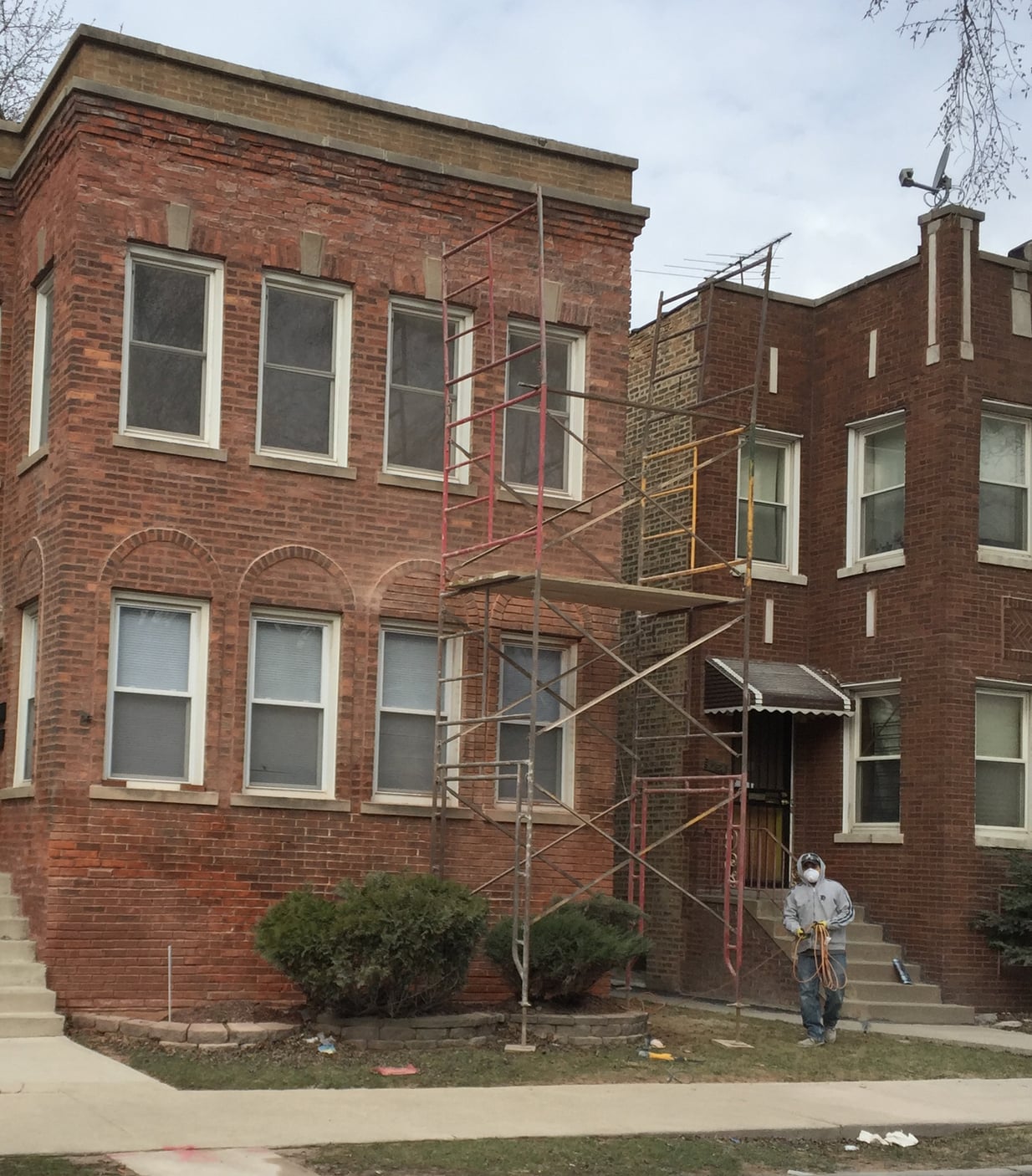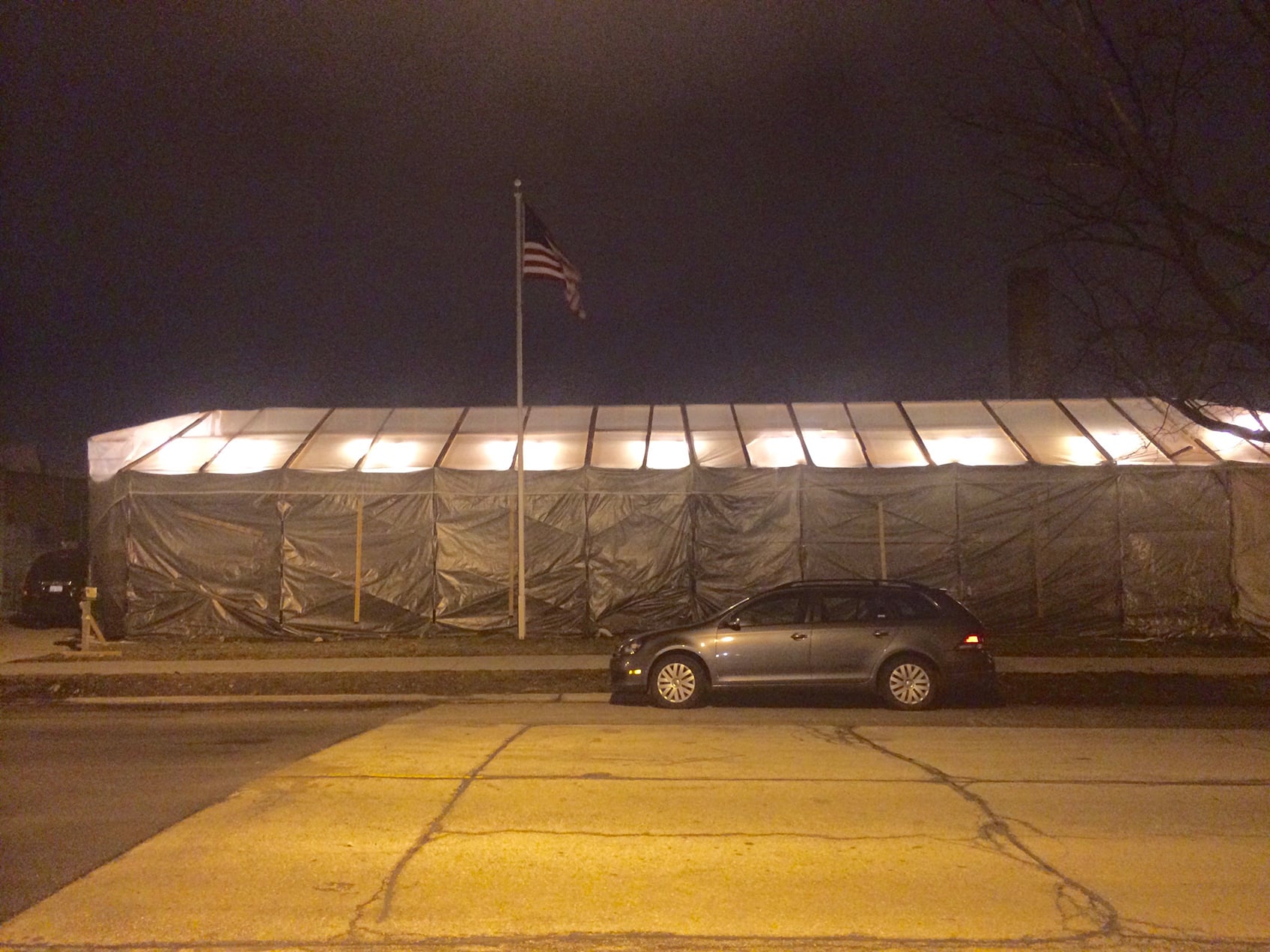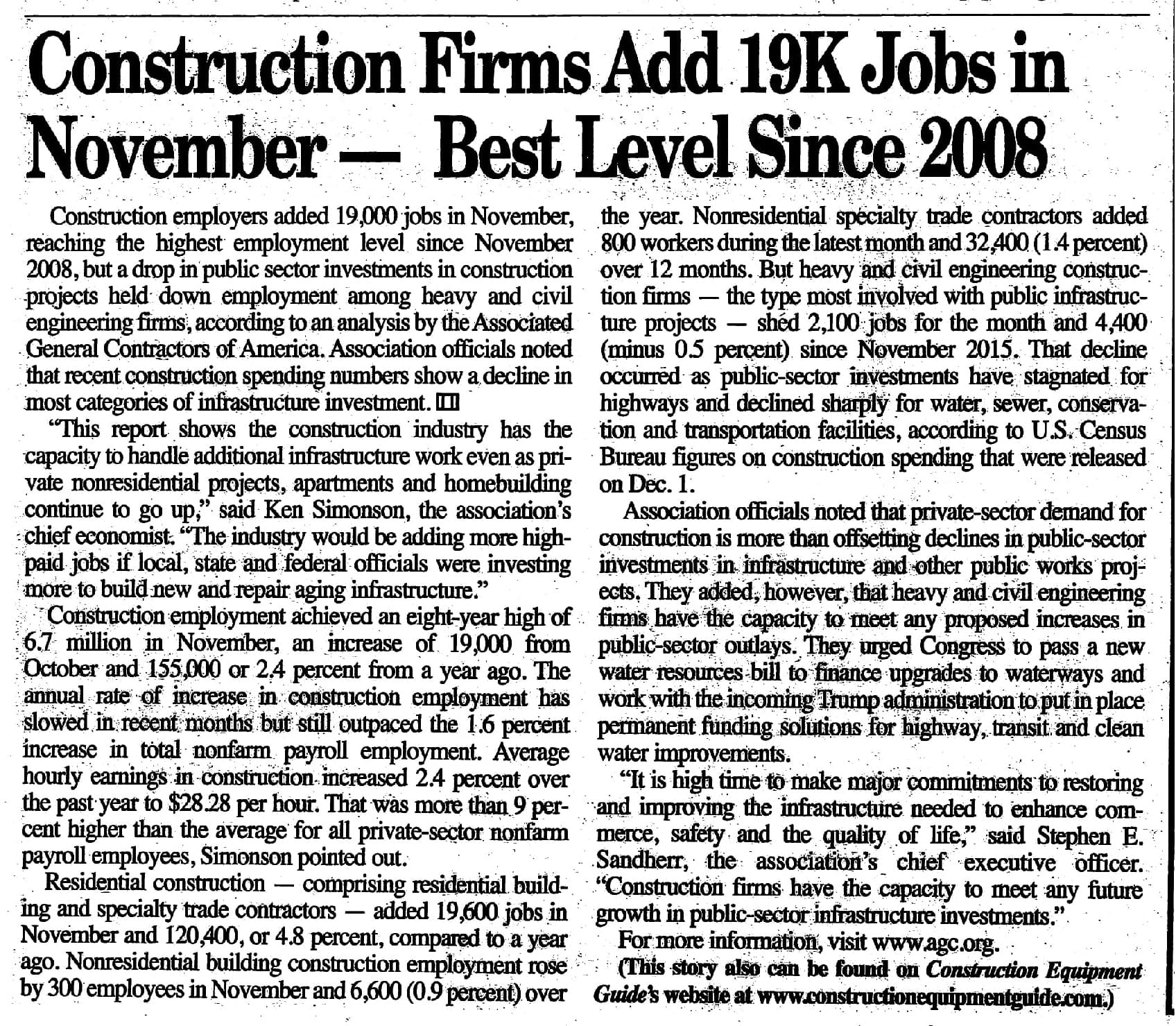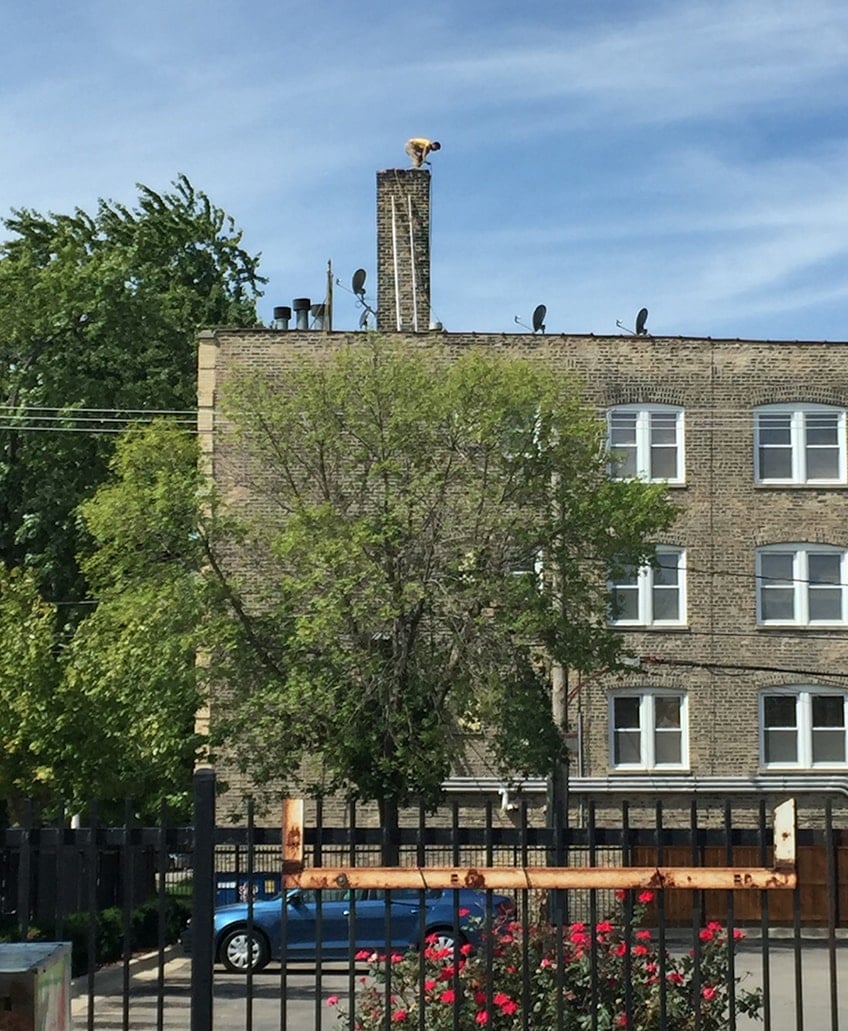I passed by this job site in the Avondale neighborhood of Chicago just as the mason had completed his spot grinding work and stepped off the scaffolding.

I was relieved to see the mason wearing the required eye protection. But his paper mask is not OSHA approved for this type of work and does not adequately protect against the inhalation of silica dust generated when grinding mortar.
I was also really concerned about the scaffolding set-up. The wood planks installed about 10 feet above the ground and intended to serve as a work platform were not secured to the scaffolding with wire or by other means, the job site was not wrapped in any dust-suppressing mesh to reduce the public’s exposure to silica generated when grinding mortar, the scaffolding tower itself was not secured to the building anywhere (an OSHA requirement to prevent the scaffolding from tipping), and the top of the scaffolding tower lacked cross braces (and looked like it could tip at any moment).
This is an unsafe work environment and puts the mason (and the passing public) at risk of injury and silica inhalation.
Make sure that your masons have the right equipment and know-how to create a safe work environment for themselves and for you.
All masons at AAA-1 Masonry have their OSHA-10 safety cards and are ceritified in the safe set up and use of tubular pipe scaffolding and swingstage scaffolding.
Be safe out there!
-Rob
Post: Masonry Restoration Work & Cold Weather Considerations (#2 in a Series)
Monday February 13, 2017
With the short break in the winter weather it seems that every contractor with a pick-up truck and a bag of concrete was out working yesterday.
As I drove through the Logan Square neighborhood I counted seven masonry restoration projects of varying size underway. I am sure hundreds of masons were happily working on repair jobs throughout Chicago and the North Shore.
Unfortunately, the forecast for the next few days is forecasted to be unseasonably warm during the day followed by plummeting nighttime temperatures in the low 20’s and upper teens. If you have been reading these blogs or know a thing or two about masonry work, then you know that fresh mortar takes anywhere from 3 to 18 days to cure properly (depending on the type of work being performed) and that mortar starts to freeze around 28 degrees. If mortar freezes as it cures, it will not perform as expected (i.e., it will fail prematurely). Since the nighttime temperatures are forecasted to be in the low 20’s/upper teens at night, all of the masonry projects I saw underway today will freeze at night and thaw out during the day. These temperature swings are predicted to continue repeatedly for the next few days. So if you are the owner of brick building undergoing masonry restoration work, the quality of your mortar work will likely be compromised…probably without your contractor telling you.
The more mortar used to perform your repairs, the longer the mortar will take to cure. For example, grinding out and tuckpointing mortar joints may require as little 72 hours of above-freezing weather to cure, whereas the mortar in a 12”-thick parapet wall rebuild may require up to 18 days to completely cure.
As our customers know very well, AAA-1 Masonry & Tuckpointing does not put profit over product. Your project will be performed when temperatures are safe for the mortar to cure properly. Every time.
If your masonry building requires grinding and tuckpointing, masonry rebuilding, cleaning, sealing, lintel replacement or caulking, we look forward to putting our 60+ years of experience to work for you. Give us a call or shoot us an e-mail. You will be very glad you did.
With gratitude,
Rob
Post: Masonry Restoration Work & Cold Weather Considerations (#1 in a Series)
Friday January 20, 2017
Winter weather in Chicago is anything but predictable. Last year the balmy late-season weather allowed our masons to work until just a few days before Christmas. This year, the first cold snap arrived shortly after Thanksgiving, followed by early December snows, followed by a lovely stretch of balmy January weather. (I saw lightning in the skies last night, and this weekend’s temperatures are predicted to reach the mid-50s!)
If your masonry wall or chimney is being rebuilt (“brickwork” as we say in the trade), then all of that fresh mortar needs a minimum of two weeks of above-freezing weather day and night in order to cure properly. If your mortar joints are being restored (i.e., ground out & tuckpointed) then a minimum of three days of above-freezing weather day and night is required in order to cure correctly.
If the mortar freezes early on during the curing process, then chances are very good that it will not perform as expected. Yes it is legal to add mortar conditioners like anti-freeze to prevent the mortar from freezing and accelerants to hasten the curing process, but as far as we are concerned their use is entirely unethical since they have the effect of reducing the integrity (and therefore the longevity) of the mortar by a significant amount. How would you feel knowing the longevity of the mortar used to restore your building was reduced by 50% because the mason used season extenders?!?

AAA-1 Masonry only performs cold weather work if the job site is heated around the clock. That means the job site remains above-freezing at 5:00pm when the masons pack up for the day, at 1:00am when the masons are fast asleep, and 7:00am when the masons return to resume their work. In order to achieve a heated work site 24/7 the site must be wrapped in tarpaulins or plastic, and heat piped to the site. Other than AAA-1 Masonry, I have yet to see any masonry restoration company go to these lengths to ensure their mortar does not freeze during the colder months. (Typically, masons turn off their worksite heaters at the end of the day when they leave and fire them up again the next morning when they return, guaranteeing that the curing mortar freezes every night and thaws every morning. Shame on them!)
In the photo at rightabove AAA-1 Masonry & Tuckpointing completely enclosed this commercial building’s facade and piped in heat in order to ensure the January worksite temperatures never dipped below 45 degrees day and night. Our extra effort allowed the brickwork to cure correctly and should last for generations.
Should your next masonry project extend into the colder months, make sure your contractor understands the importance of maintaining above-freezing worksite temperatures day and night.
- Rob
Post: An Industry In Growing Demand
Tuesday December 20, 2016
Now that the weather has turned cold and the work season has drawn to a close, I found myself with extra time on my hands—at last!—and started perusing the Midwest edition of Construction Equipment Guide. It’s full of advertisements for heavy machinery, trucks and tools of the trade and does a nice job of keeping its fingers on the pulse of the construction industry in aggregate. On the lower half of page 49 of the December 17, 2016 issue, I read this article:

Being a part the construction trades, we at AAA-1 Masonry & Tuckpointing have observed what the article affirms: private sector construction activity has been increasing steadily and, apparently, outpacing the corresponding decline in public sector construction activity.
As a masonry restoration company, AAA-1 Masonry & Tuckpointing has benefitted from the steady growth in demand for private sector construction activity, yes (a rising tide lifts all boats). But from my perspective, the bulk of our company’s growth since taking over the reigns of the company more than a decade ago is directly attributable to our artisans’ critical attention to detail, insistence on quality and craftsmanship, and impressive communication with our clients. I am extremely proud to have the opportunity to work with such talented and motivated men and women…many of whom measure their tenure at the company not in years but in decades!
Thank you for allowing us to remain an industry leader in the field of quality masonry restoration. We wish you and your family good health, peace and prosperity and a very blessed New Year.
With gratitude,
Rob
Post: Some Thoughts About Safety (#4 in a Series)
Thursday July 28, 2016
This is the latest in an ongoing series of safety-related posts. See earlier entries Part 1, Part 2, and Part 3.
I was driving through Lincoln Park this week and happened to look out the passenger-side window while stopped at a red light. I saw a mason working on top of what appeared to be a 20’-tall chimney (which itself was built atop a 50’-tall building) and fumbled for my camera to capture what I saw.

I had so many concerns about this mason’s safety that I parked the car, ran over to the job site, and suggested to the worker that he return to the job after he had the equipment needed to perform his work safely. He told me he did it all the time and I didn’t need to worry. Yikes, I hope he and the property owner both have good insurance (he needs it when he gets injured, and the property owner needs it when the worker’s personal injury attorney suggests suing the building owner for unsafe work conditions).
Several work site safety violations scared me into action. Did you happen to notice them?
Safety Violation #1: The ladder used to access the top of the chimney is not tall enough. So, simply getting to the top of the chimney and getting down off the chimney are themselves risky endeavors.
Safety Violation #2: The ladder is not tied off to anything. If you look closely, the rope in the mason’s hands is for pulling materials up and down.
Safety Violation #3: The worker is not wearing a safety harness with a lifeline tied off to anything secure and immovable. That means he could easily fall into the chimney shaft (likely an uninterrupted fall to the basement about 70 feet down) and break his neck.
Safety Violation #4: The mason appears to be working alone. If he runs into a jam and requires immediate assistance (e.g., the unsecured ladder blows over in the wind while he is standing on top of the chimney), no one will be present to respond.
An easy solution to these job site safety violations would be to erect pipe scaffolding upon the flat roof, secure the scaffolding to the walls of the chimney using scaffolding clamps, and stand on this stable platform instead of the edge of what appears to be a 100-year-old chimney.
With good training, thoughtful job site set-up and an awareness that comes from decades and decades of field experience, we mitigate work site hazards and provide you with peace of mind.
Be safe out there and thank you for your support!
- Rob
